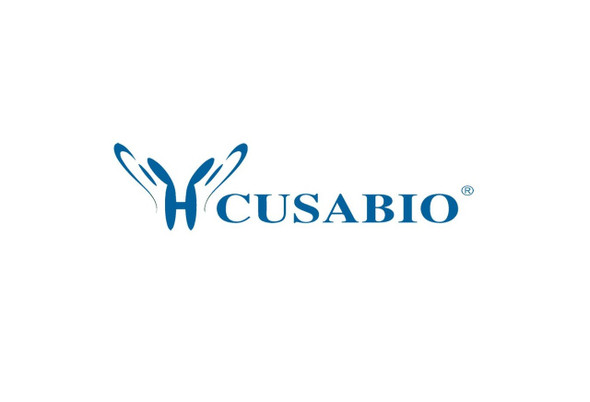Cusabio Human Recombinants
Recombinant Human Spermatogenesis-defective protein 39 homolog (SPE39) | CSB-EP888005HU
- SKU:
- CSB-EP888005HU
- Availability:
- 13 - 23 Working Days
Description
Recombinant Human Spermatogenesis-defective protein 39 homolog (SPE39) | CSB-EP888005HU | Cusabio
Alternative Name(s): VPS33B-interacting protein in apical-basolateral polarity regulatorVPS33B-interacting protein in polarity and apical restriction
Gene Names: VIPAS39
Research Areas: Others
Organism: Homo sapiens (Human)
AA Sequence: MNRTKGDEEEYWNSSKFKAFTFDDEDDELSQLKESKRAVNSLRDFVDDDDDDDLERVSWSGEPVGSISWSIRETAGNSGSTHEGREQLKSRNSFSSYAQLPKPTSTYSLSSFFRGRTRPGSFQSLSDALSDTPAKSYAPELGRPKGEYRDYSNDWSPSDTVRRLRKGKVCSLERFRSLQDKLQLLEEAVSMHDGNVITAVLIFLKRTLSKEILFRELEVRQVALRHLIHFLKEIGDQKLLLDLFRFLDRTEELALSHYREHLNIQDPDKRKEFLKTCVGLPFSAEDSAHIQDHYTLLERQIIIEANDRHLESAGQTEIFRKHPRKASILNMPLVTTLFYSCFYHYTEAEGTFSSPVNLKKTFKIPDKQYVLTALAARAKLRAWNDVDALFTTKNWLGYTKKRAPIGFHRVVEILHKNNAPVQILQEYVNLVEDVDTKLNLATKFKCHDVVIDTYRDLKDRQQLLAYRSKVDKGSAEEEKIDALLSSSQIRWKN
Source: E.coli
Tag Info: N-terminal 6xHis-SUMO-tagged
Expression Region: 1-493aa
Sequence Info: Full Length
MW: 73 kDa
Purity: Greater than 90% as determined by SDS-PAGE.
Relevance: May play a role in vesicular trafficking during spermatogenesis . Plays a role in lysosomal trafficking, probably via association with the core HOPS complex in a discrete population of endosomes. May play a role in epithelial polarization through stabilization of apical mbrane protein content, possibly via the RAB11A-dependent apical recycling pathway. Also involved in direct or indirect transcriptional regulation of E-cadherin.
Reference: Complete sequencing and characterization of 21,243 full-length human cDNAs.Ota T., Suzuki Y., Nishikawa T., Otsuki T., Sugiyama T., Irie R., Wakamatsu A., Hayashi K., Sato H., Nagai K., Kimura K., Makita H., Sekine M., Obayashi M., Nishi T., Shibahara T., Tanaka T., Ishii S. , Yamamoto J., Saito K., Kawai Y., Isono Y., Nakamura Y., Nagahari K., Murakami K., Yasuda T., Iwayanagi T., Wagatsuma M., Shiratori A., Sudo H., Hosoiri T., Kaku Y., Kodaira H., Kondo H., Sugawara M., Takahashi M., Kanda K., Yokoi T., Furuya T., Kikkawa E., Omura Y., Abe K., Kamihara K., Katsuta N., Sato K., Tanikawa M., Yamazaki M., Ninomiya K., Ishibashi T., Yamashita H., Murakawa K., Fujimori K., Tanai H., Kimata M., Watanabe M., Hiraoka S., Chiba Y., Ishida S., Ono Y., Takiguchi S., Watanabe S., Yosida M., Hotuta T., Kusano J., Kanehori K., Takahashi-Fujii A., Hara H., Tanase T.-O., Nomura Y., Togiya S., Komai F., Hara R., Takeuchi K., Arita M., Imose N., Musashino K., Yuuki H., Oshima A., Sasaki N., Aotsuka S., Yoshikawa Y., Matsunawa H., Ichihara T., Shiohata N., Sano S., Moriya S., Momiyama H., Satoh N., Takami S., Terashima Y., Suzuki O., Nakagawa S., Senoh A., Mizoguchi H., Goto Y., Shimizu F., Wakebe H., Hishigaki H., Watanabe T., Sugiyama A., Takemoto M., Kawakami B., Yamazaki M., Watanabe K., Kumagai A., Itakura S., Fukuzumi Y., Fujimori Y., Komiyama M., Tashiro H., Tanigami A., Fujiwara T., Ono T., Yamada K., Fujii Y., Ozaki K., Hirao M., Ohmori Y., Kawabata A., Hikiji T., Kobatake N., Inagaki H., Ikema Y., Okamoto S., Okitani R., Kawakami T., Noguchi S., Itoh T., Shigeta K., Senba T., Matsumura K., Nakajima Y., Mizuno T., Morinaga M., Sasaki M., Togashi T., Oyama M., Hata H., Watanabe M., Komatsu T., Mizushima-Sugano J., Satoh T., Shirai Y., Takahashi Y., Nakagawa K., Okumura K., Nagase T., Nomura N., Kikuchi H., Masuho Y., Yamashita R., Nakai K., Yada T., Nakamura Y., Ohara O., Isogai T., Sugano S.Nat. Genet. 36:40-45(2004)
Storage: The shelf life is related to many factors, storage state, buffer ingredients, storage temperature and the stability of the protein itself. Generally, the shelf life of liquid form is 6 months at -20?/-80?. The shelf life of lyophilized form is 12 months at -20?/-80?.
Notes: Repeated freezing and thawing is not recommended. Store working aliquots at 4? for up to one week.
Function: Proposed to be involved in endosomal maturation implicating in part VPS33B. In epithelial cells, the VPS33B
Involvement in disease: Arthrogryposis, renal dysfunction and cholestasis syndrome 2 (ARCS2)
Subcellular Location: Cytoplasm, Cytoplasmic vesicle, Early endosome, Recycling endosome, Late endosome
Protein Families: SPE39 family
Tissue Specificity:
Paythway:
Form: Liquid or Lyophilized powder
Buffer: If the delivery form is liquid, the default storage buffer is Tris/PBS-based buffer, 5%-50% glycerol. If the delivery form is lyophilized powder, the buffer before lyophilization is Tris/PBS-based buffer, 6% Trehalose, pH 8.0.
Reconstitution: We recommend that this vial be briefly centrifuged prior to opening to bring the contents to the bottom. Please reconstitute protein in deionized sterile water to a concentration of 0.1-1.0 mg/mL.We recommend to add 5-50% of glycerol (final concentration) and aliquot for long-term storage at -20?/-80?. Our default final concentration of glycerol is 50%. Customers could use it as reference.
Uniprot ID: Q9H9C1
HGNC Database Link: HGNC
UniGene Database Link: UniGene
KEGG Database Link: KEGG
STRING Database Link: STRING
OMIM Database Link: OMIM









